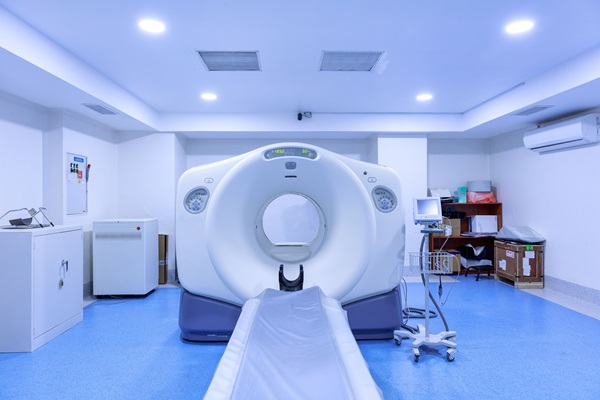What To Expect During a CT Scan: A Patient’s Guide

A CT scan, or computed tomography scan, is a diagnostic tool that provides detailed images of the body’s internal structures. This non-invasive procedure helps medical professionals diagnose and monitor various conditions, from injuries to chronic illnesses. Knowing what to expect during a CT scan can ease concerns and prepare patients for a smooth experience.
What is a CT scan?
A CT scan combines X-ray technology and computer processing to produce cross-sectional images of the body. These images provide a more detailed view than traditional X-rays, allowing medical providers to examine bones, blood vessels, and soft tissues precisely. Physicians typically use CT scans to identify issues such as fractures, infections, tumors, or internal bleeding.
The procedure is quick and painless, typically lasting only a few minutes, depending on the scanned area. It is performed outpatient and requires little to no recovery time, making it convenient for urgent or primary care settings.
Preparing for a CT scan
Preparation for a CT scan depends on the area being examined and whether contrast material will be used. Contrast materials enhance the visibility of specific structures or tissues on the scan. Depending on the type of scan, they are typically administered orally or intravenously.
Before the scan, patients are usually advised to wear comfortable, loose-fitting clothing and remove metal objects, such as jewelry or belts. If contrast material is needed, fasting for a few hours before the procedure may be required. Patients need to inform their provider about any allergies, medications, or medical conditions, particularly kidney issues or pregnancy, as these may affect the use of contrast material.
The CT scan process
During a CT scan, the patient lies on a motorized table that slides into a large, donut-shaped machine. The scanner rotates around the patient, capturing multiple images from different angles. The patient may be asked to hold their breath briefly to ensure clear images, especially for scans of the chest or abdomen.
If contrast material is used, patients might experience a warm sensation or a metallic taste in the mouth, which typically passes quickly. The radiology technician monitors the procedure from a separate control room but remains in communication with the patient through an intercom.
The scan itself is painless and typically takes between 5 and 30 minutes, depending on the complexity of the examination. After, the patient can resume normal activities immediately.
What happens after the CT scan?
After the procedure, the images are reviewed by a radiologist, a medical specialist trained in interpreting diagnostic imaging. The radiologist creates a detailed report and shares it with the referring physician, who discusses the findings and next steps with the patient.
If contrast material was used, drinking plenty of fluids after the scan helps flush it out of the body. Patients should notify their provider if they experience unusual symptoms, such as itching, rash, or difficulty breathing, as these could indicate an allergic reaction.
Benefits of a CT scan
A CT scan provides numerous benefits, including its ability to produce highly detailed images that aid in accurate diagnosis and treatment planning. It is a versatile tool used in many medical fields, including urgent and primary care, to quickly assess injuries, identify internal issues, and monitor the effectiveness of treatments.
Compared to other imaging techniques, CT scans are relatively fast, making them particularly valuable in emergencies where time is critical. They are also non-invasive, reducing the risks associated with more invasive diagnostic procedures.
Addressing common concerns
Some patients may feel anxious about undergoing a CT scan, particularly if it is their first experience with the procedure. Knowing what to expect can alleviate many of these concerns. For example, while the scanner may make noise during operation, the patient does not feel anything during the process.
Radiation exposure is another common concern. However, modern CT scans are designed to use the lowest dose of radiation possible while still providing clear images. The benefits of obtaining accurate diagnostic information typically far outweigh the risks associated with minimal radiation exposure.
Consult a physician if you need a CT scan
A CT scan is a valuable diagnostic tool that provides detailed insights into the body’s internal structures. By understanding what to expect during the procedure, patients can approach the experience with confidence and ease. Whether assessing injuries, diagnosing conditions, or monitoring treatment progress, a CT scan plays a vital role in modern healthcare. Consulting with a trusted healthcare provider ensures a comfortable and informed experience for any questions or concerns about the procedure. For more information, schedule a consultation visit today.
Request an appointment here: https://tx-urgentcare.com or call Texas Urgent Care & Imaging Center at (832) 941-1894 for an appointment in our New Caney office.
Check out what others are saying about our services on Yelp: CT Scan in New Caney, TX.
Recent Posts
If you work in public transportation, you may need to have a DOT drug screening. The Department of Transportation (DOT) regulates this test and requires it for you. You might be wondering what this test is like. Keep reading to learn more.Congress passed the Omnibus Transportation Employee Testing Act in 1991. Congress knew that the…
Walk-in clinic provide convenient, accessible health care for non-emergency medical needs, making it an ideal choice when immediate attention is necessary. Understanding when to visit a clinic can help patients save time, avoid unnecessary trips to the emergency room, and receive quality care for their health concerns. These clinics handle various issues, offering fast, professional…
Walk-in clinics provide minor illness treatment for patients seeking quick and effective healthcare to address their symptoms. These accessible facilities address non-emergency medical concerns without the need to wait days for the next available appointment. The following guide will review some of the most common minor illness treatments offered at walk-in clinics.Respiratory tract infections (RTIs)…
Ultrasounds are non-invasive diagnostic tools used in urgent care and primary care settings to assess various medical conditions. With these images, healthcare providers can identify and evaluate potential health concerns. Understanding when ultrasounds are necessary and what to expect during them can empower patients to make informed decisions about their care.An ultrasound diagnostic scan uses…


